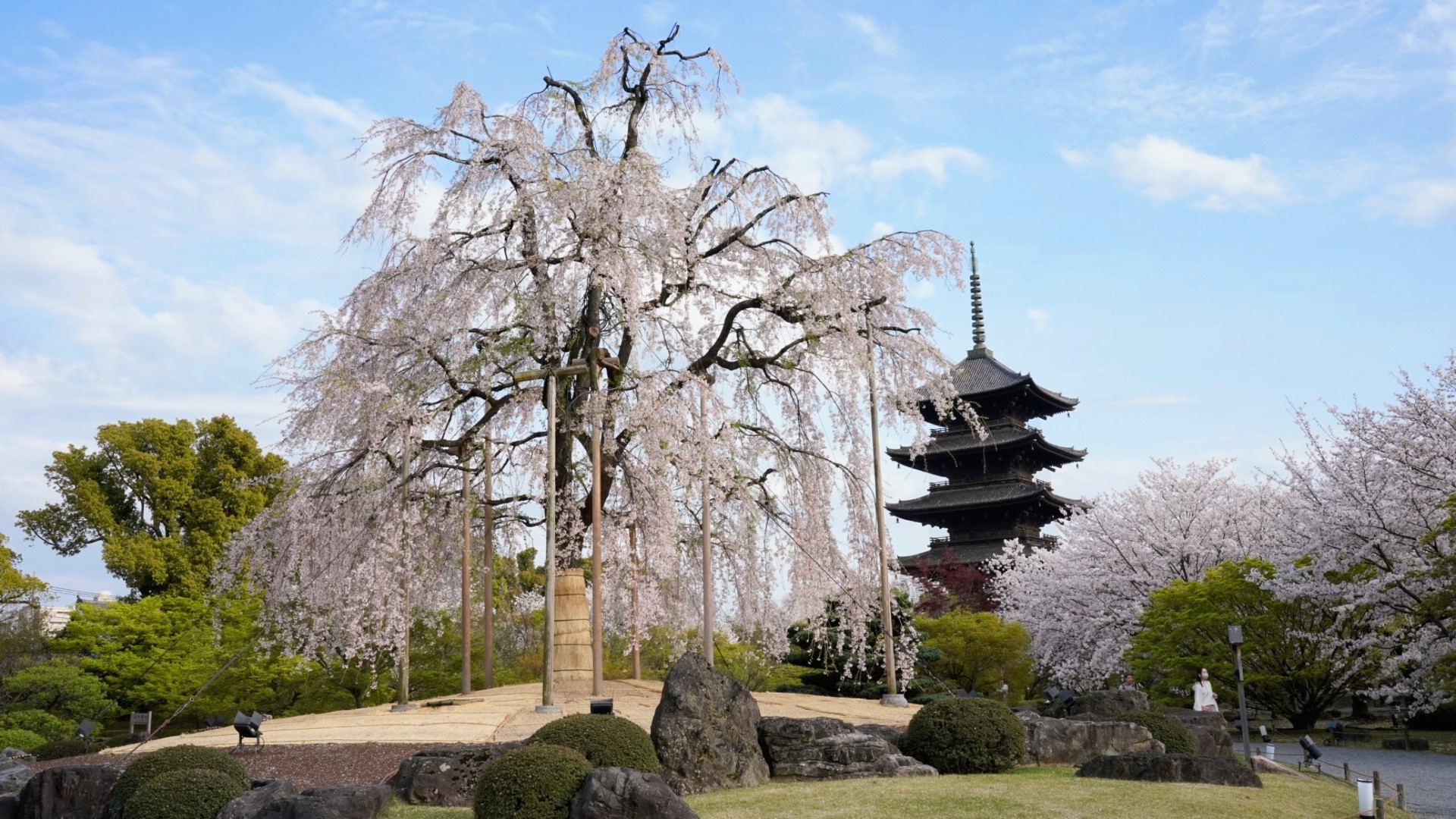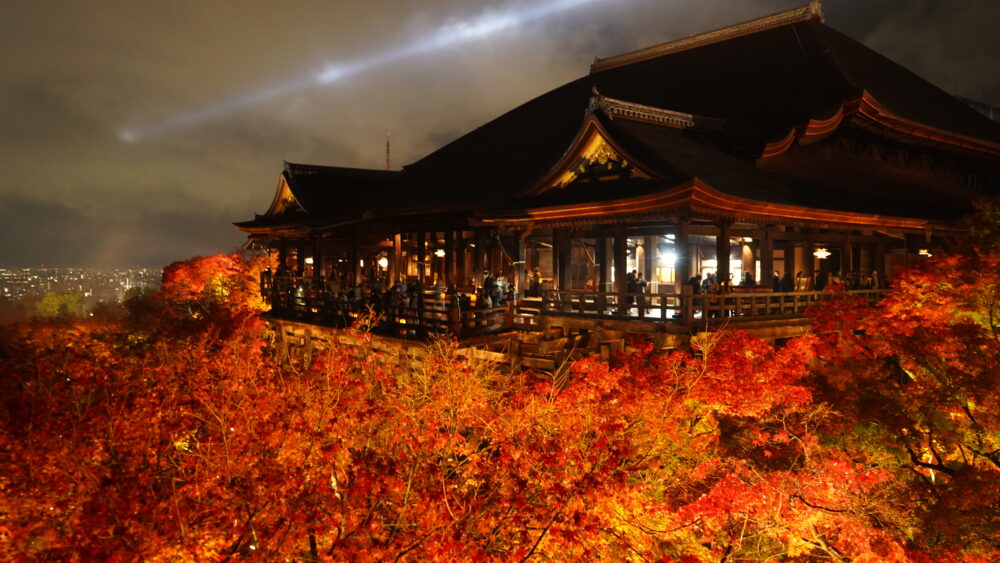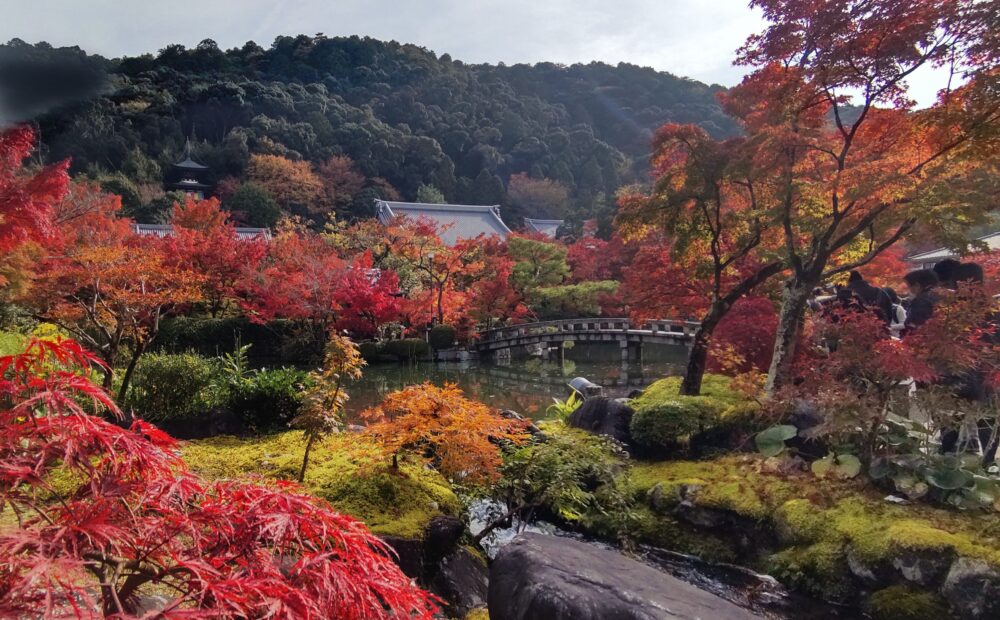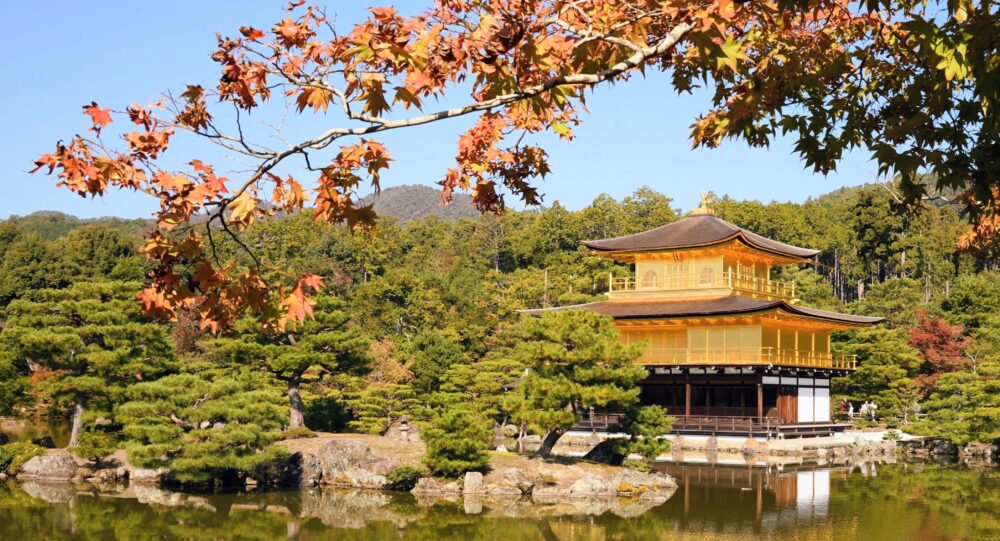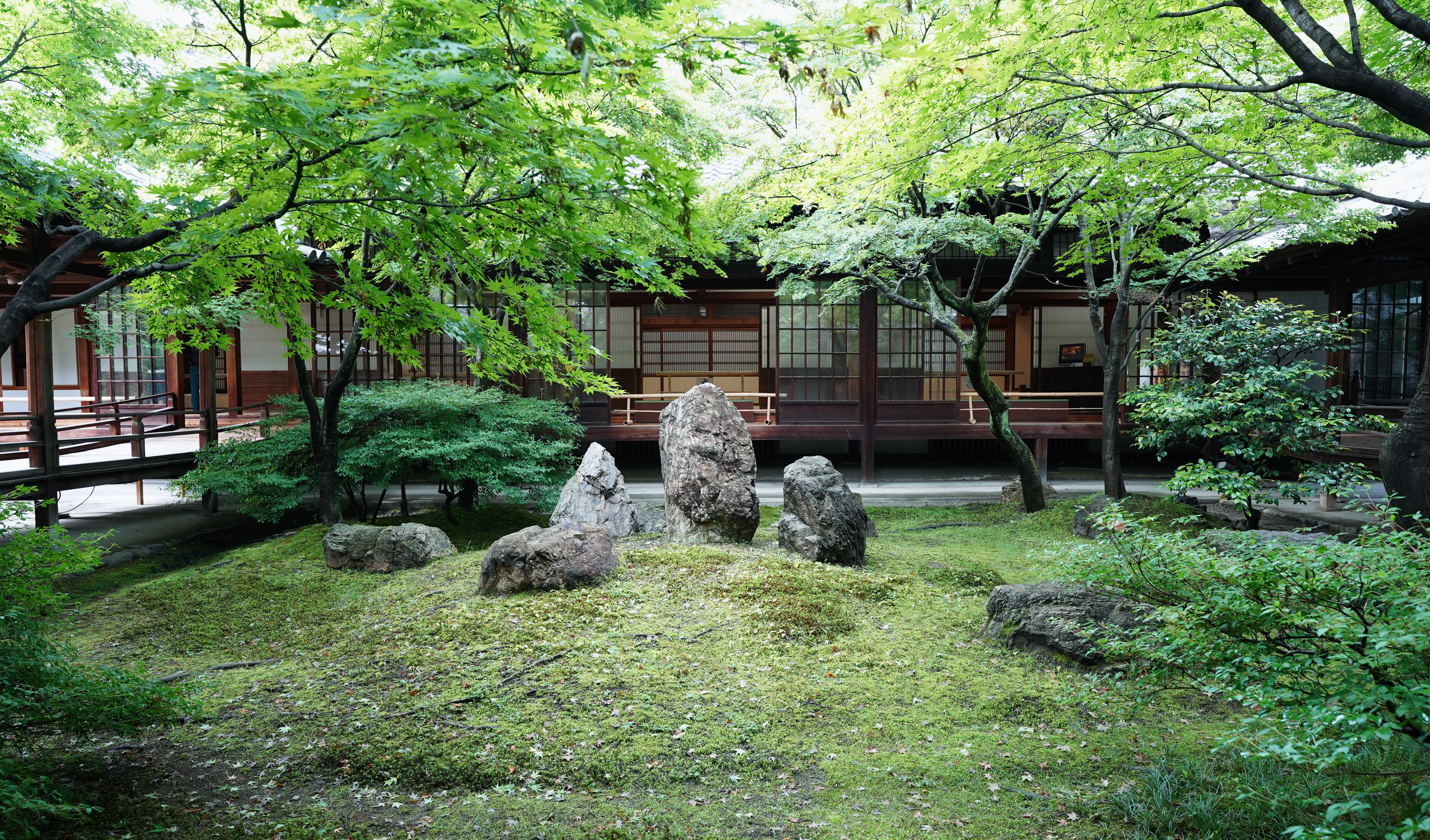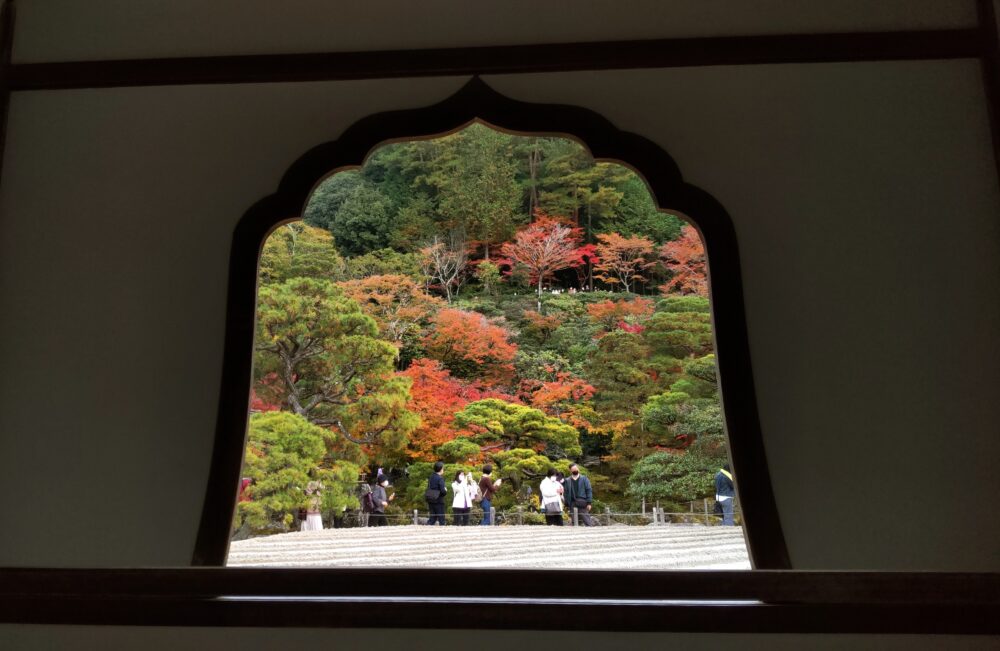Enkoji Temple | All that You Need to Know in 2024
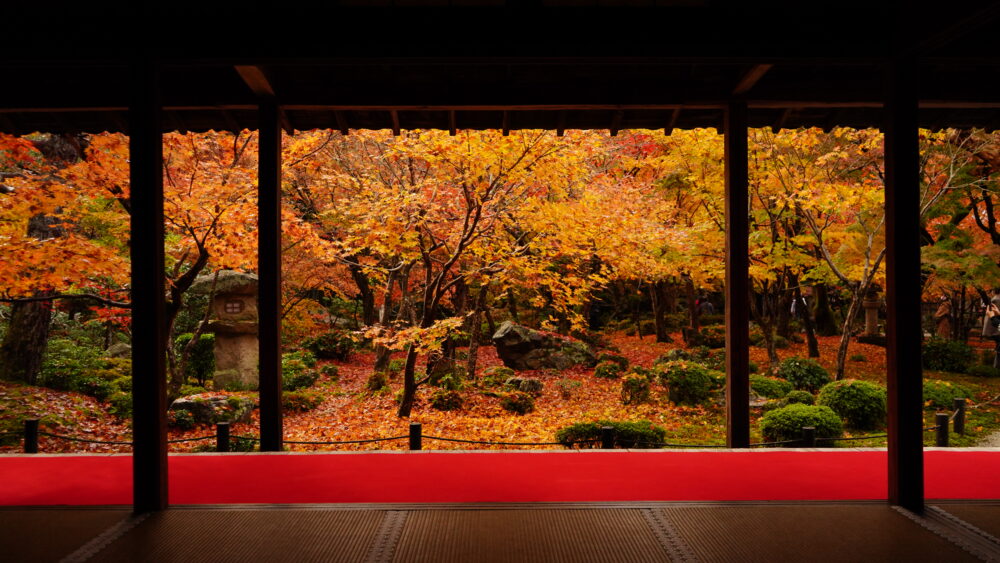
There are several iconic and breathtaking gardens in the city of Kyoto. “Enkoji Temple has one of the best Japanese gardens that changes dramatically with each season. This garden view from the main room is as beautiful as the photo, which is harmoniously designed to experience throughout the year.
If you are planning a trip to Kyoto and want to experience the most vibrant view, I highly recommend visiting “Enkoji Temple”.
Here is some information about Enkoji Temple that you need to know.
※ Enkoji Temple require advance reservations for general visitors during the special fall viewing from November.9th to December.8th.
History
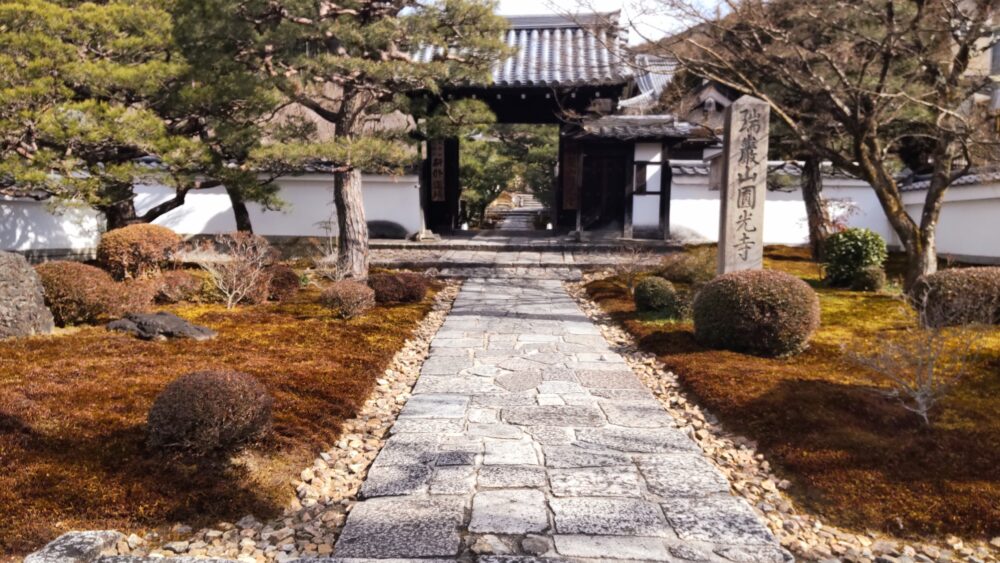
Enkoji Temple, a Rinzai Zen Buddhist temple, was built as an educational institution in 1601 by Ieyasu Tokugawa who was the fist shogun of the Tokugawa shogunate of Japan. Enkoji temple was opened to the general public and not exclusively to buddhist monks. The temple was moved to its present location, Sakyo Ward in 1667, and transform to a temple.
Features
Gardens
Jyu-gyu no niwa

The highlight of the “Jyu-gyu” garden is the picturesque view from a main hall of Enkoji Temple. The pillars, the celling, the red felt carpet walkway look like a framed view, creating a “living picture”.
A strolling pond garden “Jyu-gyu no niwa”, representing the ten ox-herding images used in the Zen Buddhist tradition to illustrate the stages of a practitioner’s progress toward enlightenment.
This garden features various trees, the most prominent species of maple found there is the Japanese maple (Acer palmatum, Acer amoenum, Acer palmatum ver. Matumurae).
These maple trees undergo a fascinating transformation as their leaves gradually change from green to vibrant shades of red, orange and yellow. In addition, stone lanterns, arrangement stones and green moss create moments of reflection, beauty and tranquility.
・Suikinkutsu (An ornament)
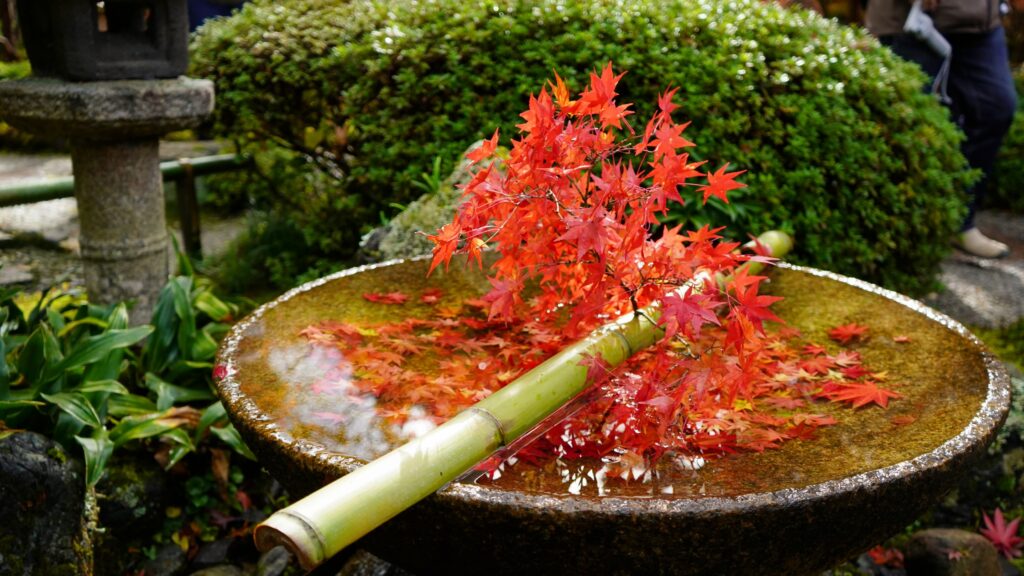
A suikinkutsu is a Japanese garden ornament that allows one to enjoy the sound of dripping water. It’s a device that makes a hollow sound by letting water drip into a cavity dug in the ground near a chozubachi (a basin for washing one’s hands and mouth).
It also serves the function of draining water from the chozubachi. The water drops in a simple rhythm that’s music to our ears. During the fall foliage season, maple leaves are often decorated to add a touch of seasonal beauty.
Honryutei Garden
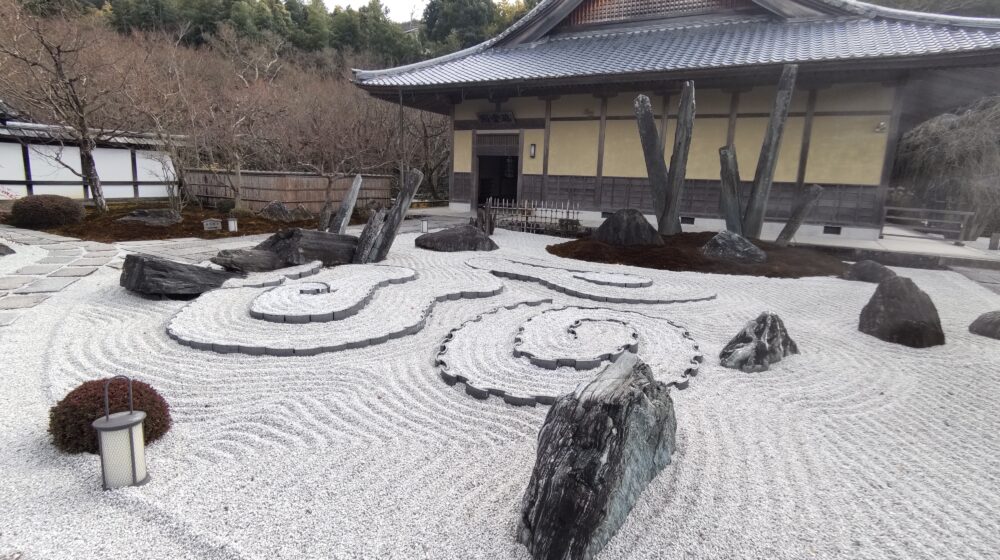
Modern Japanese dry garden is a kind of Japanese garden. This “Honryutei” garden represents the dragon with elongated stone arrangements (back left in the photo above), which symbolize strength, power, and good fortune in Japan. Its swirling white sand and tiles resemble a sea of clouds, while the towering stone pillars resemble lightning bolts. The rock formation on the left represents a dragon soaring through the sky, adding to the garden’s sense of energy and vitality.
Unlike traditional karesansui gardens, this garden does not use tomeishi (boundary stones) to mark its boundaries. Instead, it invites visitors to complete the garden in their own minds, fostering a deeper connection between the viewer and the artwork.
Bamboo Grove
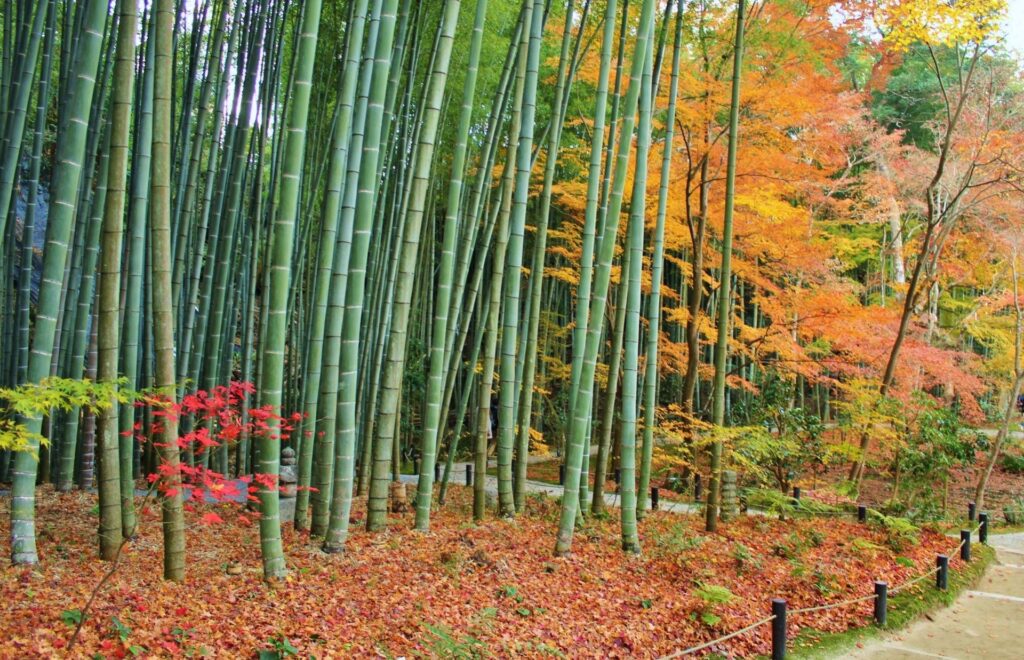
In the depths of the Jyu-gyu garden, a lush bamboo grove spreads out. The panoramic view of northern Kyoto from the bamboo grove of Enkoji Temple is described in historical texts as breathtaking.
Tomb of Tokugawa Ieyasu and Toshogu Shrine
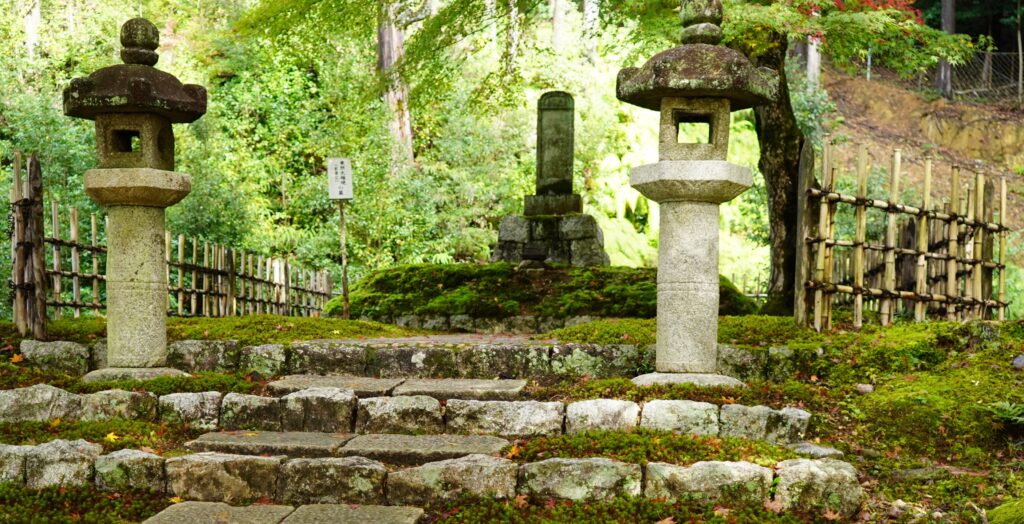
At the top of a hill beyond the bamboo grove, on a high platform, is the tomb of Tokugawa Ieyasu and the Toshogu Shrine dedicated to him. Ieyasu was the first shogun to unify Japan and establish the Tokugawa shogunate. According to his will, his teeth were buried in a tomb here. From this high platform you can see the castle city of Kyoto.
Zuiunkaku( treasure house)
Zuiunkaku, adjacent to Honryutei Garden, is the treasure house of Enkoji Temple. It houses exhibits such as a hanging scroll depicting Bodhidharma, the founder of Zen Buddhism, Ink Wash paintings by Maruyama Okyo, a Japanese painter of the mid to late Edo period, and the 50,000 original wooden printing blocks, the oldest in Japan.
Banryukutsu (meditation hall)
Banryukutsu is a meditation hall. It used to be for nuns only, but now it is open to both men and women. Sunday morning zazen is open to all.
Taigetu-an(tea house)
Taigetu-an, located adjacent to the main hall, is a tea room where it is said that Iwakura Tomomi, a leading figure of the Meiji Restoration, often enjoyed tea. This tea room is not open to the public.
Best seasons
Autumn season
During the autumn season, which usually lasts from late November to early December, the trees in Kyoto City gradually turn from yellow to red. The Enkoji Temple is adorned with stunning autumn leaves, creating a breathtaking sight when combined with the temple’s historic architecture. Especially in Enkoji Temple, there are many species of maple trees that turn into vibrant hues of red, orange, and yellow, attracting both locals and tourists alike.
Summer season
While summer in Kyoto city can be hot and humid, Enkoji Temple can be visited and enjoyed as a summer retreat. Enkoji Temple is located in part of eastern Kyoto city, Sakyo Ward, where has natural beauty, surrounded by many forest. In addition, Enkoji Temple’s garden has many cooling effect: lush, green, strolling pod, bamboo cave. Crape myrtle in the entrance of the garden is in bloom with large, showy clusters of pink flowers in the summer season.
Infromation
Open Hours
| Term | Open hours |
|---|---|
| Normal term | 9:00 a.m. – 5:00 p.m. |
| (Special fall viewing) November, 8th to December 9th in 2024 | 8:00 a.m. – 5:00 p.m. |
Entrance Fee
| Term | Entrance Fee |
|---|---|
| Normal Term | Adults: 600yen High school, Junior high school students : 500 yen Elementary school students: 300 yen |
| Special fall viewing | Adults: 1000 yen Elementary to High school students : 500 yen ※ Need a reservation |
・Camera policy
Long-stay photography, photo shoots, and accompanying photographers are strictly prohibited. Additionally, changing clothes on the premises is strictly forbidden.
Address
13 Ichijoji Kotanicho, Sakyo Ward, Kyoto, 606-8147
How to get to Enkoji Temple
To avoid crowds during peak seasons (November, December, March, and April), here’s a route from Kyoto Station to Enkoji Temple
- Take the JR Nara Line(Brown Line) from Kyoto Station to Tofukuji Station. Transfer to the Keihan Main Line(Orange Line) at Tofukuji Station and get off at Demachiyanagi Station. From Demachiyanagi Station, take the Eizan Electric Railway (Yellow Line) to Ichijoji Station. It’s a 16-minute walk from Ichijoji Station to Enkoji Temple.
- Take the Kyoto Subway Karasuma Line(Green Line) from Kyoto Station to Kokusaikaikan Station. From Kokusaikaigomae bus stop, take the city bus (No. 5 Gojo-dori bound for Shijo Kawaramachi, Karasuma Gojo, or Kyoto Station) and get off at Ichijo shimizu-cho. Enkoji Temple is a 9-minute walk from the bus stop.
Nearby tourist attractions:
Shisendo, famous for its autumn maple leaves and spring azaleas, is a 5-minute walk away.
Shugakuin Imperial Villa, a villa built by retired Emperor Gomizunoō between 1656 and 1659, is located a 21-minute walk away.
Reservation in advance in fall season
Reservation is required in Special fall viewing
Enkoji Temple requiresd advance reservations for general visitors in special Autumn Event. It was from November, 9th to December 8th, 2024).
Here is Enkoji temple URL to book.
Important information regarding your reservation:
- Upon completion of your reservation for Enkouji Temple, you will receive a confirmation email.
- A reminder email will be sent the day before your visit.
- Please present these emails at the reception desk on the day of your visit. (A printed copy is also acceptable.)
Zen meditation experience
Enkoji Temple offers Zen meditation experience to the general public.
Schedule overview
- [Date] Sundays
(Reservations for seated meditation sessions are by phone only.
Tel. 075-781-8025 (9:00a.m. – 5:00 p.m.) - [Time] 6:00 a.m. – 8:00 a.m. (Beginners should arrive 15 minutes early)
- [Content] Seated Zen meditation, Temple chores, Zen lecture, Breakfast
How to get there and avoid crowds

It’s obvious that Kyoto city is crowded with tourists in high season (from March to April and November to December ). In addition, Enkoji is one of the most popular temples to see the beautiful gardens. However, a little planning will help you to visit easily. Here are some tips for getting there and avoiding the crowds.
- Avoid weekends and holidays and plan to visit on a weekday..
- If it’s not the high season, the bus and taxi is also convenient.
- The cycling is also good that the road to Enkoji Temple are well maintained, there are many bicycle rental shops and parking area near by Enkoji Temple.
Resource and Link
Enkoji temple(English text)
https://www.enkouji.jp/en/
